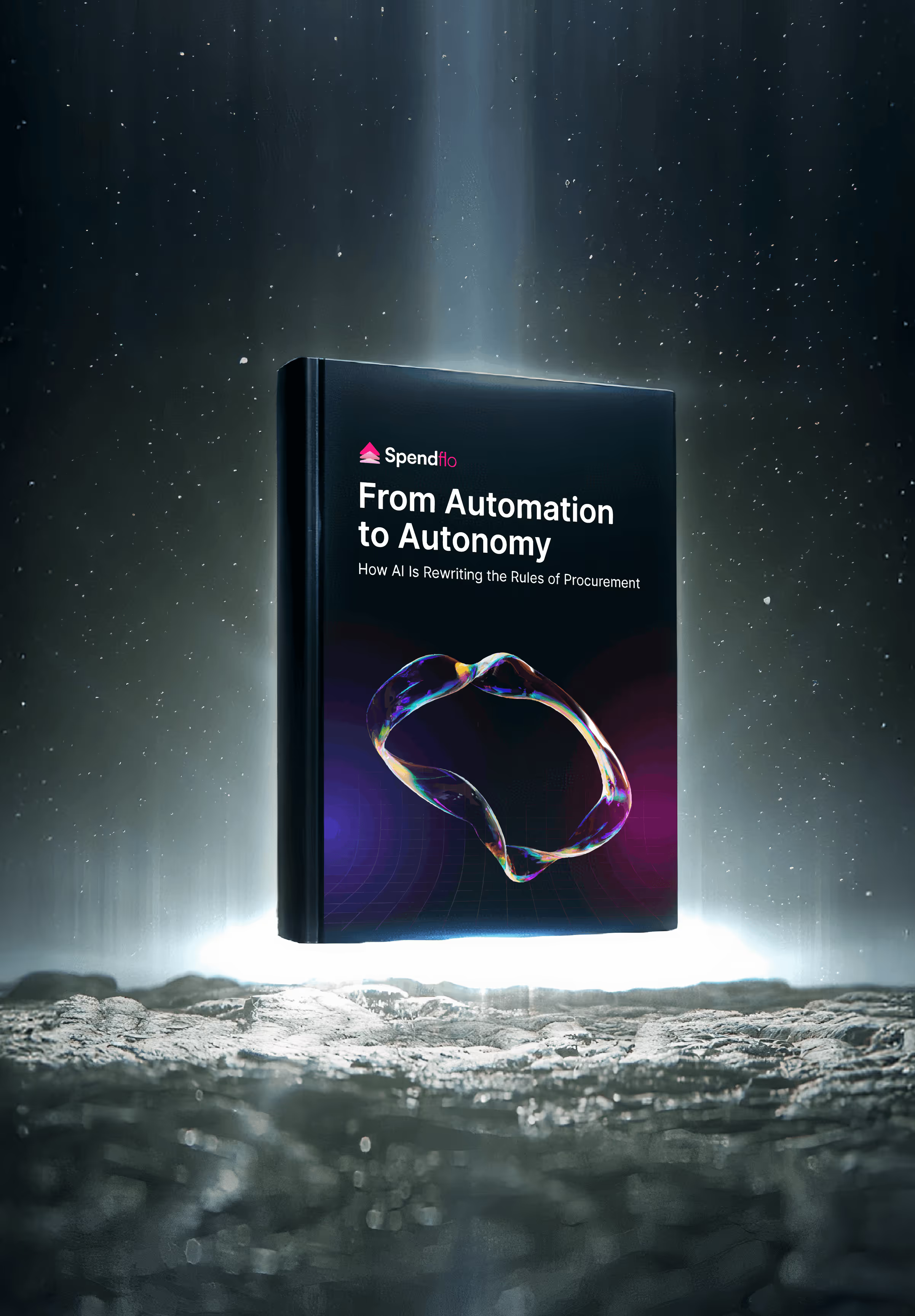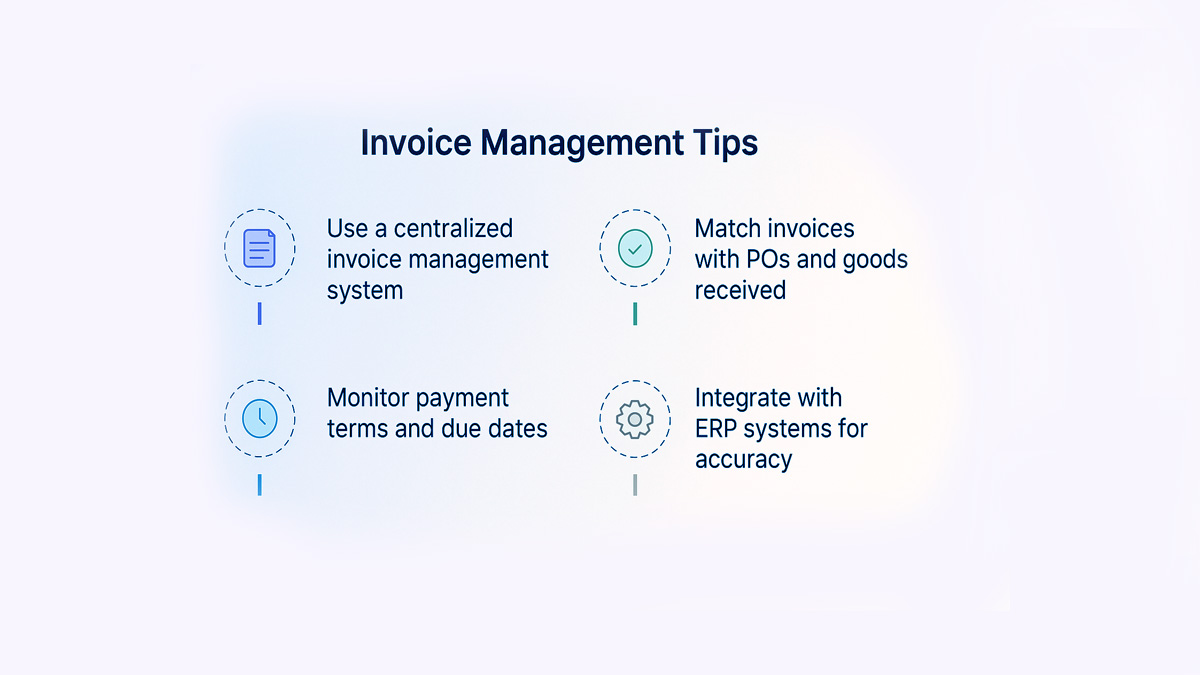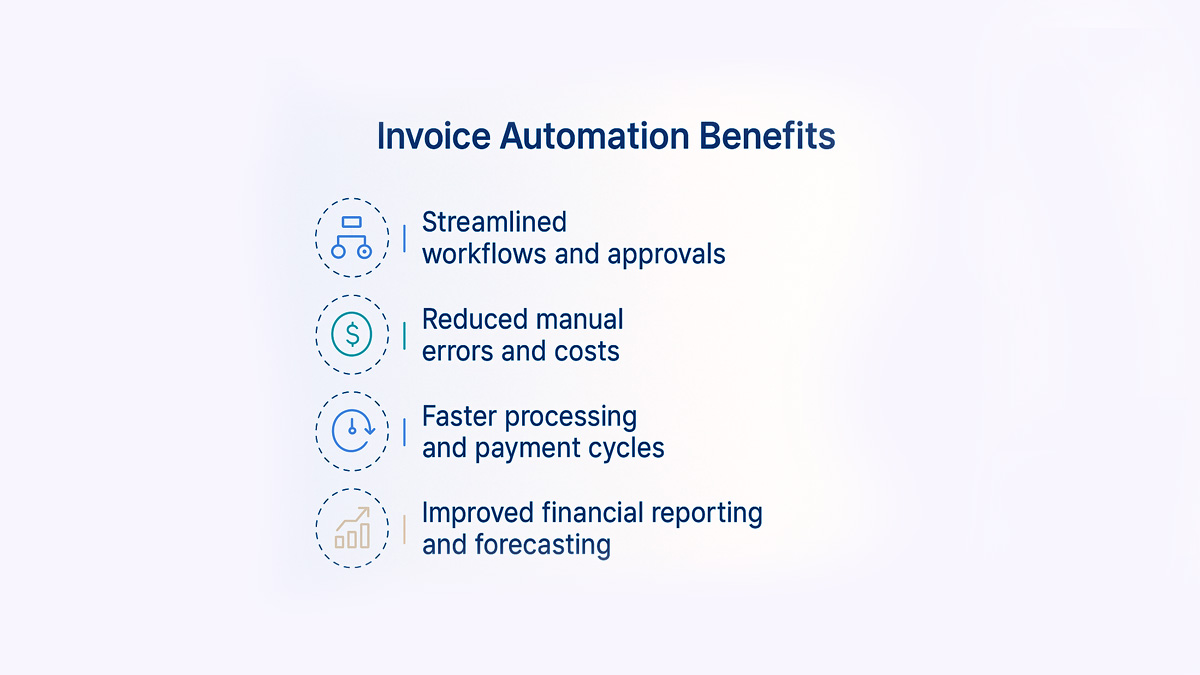

What Are Vendor Invoices & How Do You Process Them?

What Are Vendor Invoices & How Do You Process Them?
Learn what vendor invoices are and how to process them accurately using automation to improve AP efficiency and reduce errors.


Managing business finances isn’t just about watching profits - it’s also about keeping a close eye on what goes out. That’s where vendor invoices come into play. These documents may seem routine, but they’re the lifeblood of any well-run accounts payable process.
From ensuring timely payments to helping teams avoid costly errors, vendor invoices offer structure and clarity to what could otherwise be a messy web of transactions. When handled well, they foster strong supplier relationships and give your finance team the data it needs to stay on top of cash flow.
What this blog covers:
- What is a vendor invoice?
- Why vendor invoices are important in accounts payable
- How to manage and track vendor invoices effectively
- Common issues with manual vendor invoice handling
- Benefits of automating vendor invoice processing
- How Spendflo helps with vendor invoice processing
- Frequently asked questions on vendor invoices
What is a Vendor Invoice?
A vendor invoice is a formal request for payment issued by a supplier after delivering goods or services. It includes key details like invoice number, date, line items, quantities, prices, total amount due, payment terms, and supplier contact information.
Why Vendor Invoices are Important?
Vendor invoices are foundational to the accounts payable process. They don’t just reflect what’s owed - they enable better control, accuracy, and financial planning across the business. Here’s why they matter:
Improves Spend Visibility and Control
Vendor invoices offer a clear, itemized record of every purchase - from products to services. This spend visibility allows finance teams to track exactly where money is going, compare actual spending against budgets, and identify trends. With this level of clarity, it's easier to spot overspending, uncover duplicate purchases, and stay financially disciplined.
Ensures Accurate and Timely Payments
Each invoice includes crucial payment details - like due dates, amounts, and accepted payment methods. When processed efficiently, these details help prevent late payments, missed discounts, or errors like overpayments. This accuracy reduces financial leakage and ensures that suppliers get paid on time, every time.
Strengthens Supplier Relationships
Consistent and timely payment practices builds trust with suppliers. It shows professionalism and reliability - traits vendors value when deciding who gets priority service, discounts, or favorable terms. On the other hand, delays and disputes over invoices can erode supplier relationships and cause operational hiccups.
Reduces Compliance Risks
Properly handled invoices ensure every transaction is documented, traceable, and aligned with internal controls. This supports audit readiness, minimizes the risk of fraud, and helps meet regulatory obligations. When vendor invoices are processed and stored correctly, your business has the proof it needs to stay compliant.
How to Manage Vendor Invoices Effectively?
Handling vendor invoices may seem routine - until the volume grows and things start slipping through the cracks. Managing and tracking them effectively requires the right systems, checks, and integrations. Here’s how to stay ahead:

Use a Centralized Invoice Management System
Instead of juggling emails, PDFs, and spreadsheets, move everything into one unified platform. A centralized system gives finance teams a clear view of all invoices in one place - from invoice submission to approval, payment, or follow-up. It simplifies tracking, reduces the chance of missed payments, and makes auditing much easier.
Match Invoices with POs and Goods Received
Before approving payment, invoices should be matched against the corresponding purchase order and proof of delivery. This three-way matching process helps verify that the quantity, cost, and product or service delivered aligns with what's being billed. It’s one of the most effective ways to prevent overpayment, fraud, or duplicate charges.
Monitor Payment Terms and Due Dates
Every invoice comes with its own payment terms - net 15, net 30, or even early payment discounts. Tracking these terms ensures that you’re not just paying on time but also optimizing for cash flow and potential savings. Missing a due date can cost money and damage vendor relationships.
Integrate with ERP Systems for Accuracy
When your invoice processing is tied into your ERP or accounting software, you reduce manual data entry and ensure consistency across systems. This integration supports faster approvals, real-time reporting, faster invoice approvals, real-time reporting, and better financial accuracy across the board.
Common Issues with Manual Vendor Invoice Handling
Manual invoice handling might work when you're small - but as volume increases, cracks begin to show. Paper-based or spreadsheet-driven processes often introduce more problems than they solve. Here are the most common issues businesses face:
Data Entry Errors and Mismatches
Entering invoice details manually - like quantities, prices, or invoice numbers - opens the door to human error. A misplaced digit or incorrect line item can cause mismatches during reconciliation. These errors slow down approvals, create confusion, and in some cases, lead to incorrect payments.
Delayed Approvals and Missed Payments
When invoices move through email threads or sit on someone’s desk, they often get stuck in limbo. Without a clear workflow or automated reminders, approvals drag out. That leads to missed due dates, late fees, or strained vendor relationships - especially when suppliers are waiting on their money.
Duplicate or Fraudulent Invoices
Manual systems lack the ability to automatically flag duplicates or inconsistencies. That makes it easier for fraudulent invoices to sneak through or for the same invoice to be paid twice. Without proper checks, companies can bleed cash unnecessarily - often without realizing it until much later.
Lack of Visibility and Audit Trail
When invoice records are scattered across inboxes or paper files, it’s nearly impossible to get a real-time view of what’s pending, approved, or overdue. This lack of transparency creates bottlenecks and makes audits a nightmare, with missing documents and unclear approval histories.
Benefits of Automating Vendor Invoice Processing
Manual processes might feel familiar, but they’re time-consuming, error-prone, and expensive in the long run. Automation transforms vendor invoice processing from a reactive chore into a streamlined, strategic advantage. Here’s how:

Streamlined Workflows and Approvals
Automated systems create structured approval workflows that move invoices smoothly from intake to approval. No more chasing stakeholders or juggling email threads - the right people are notified at the right time. Approvals can happen in clicks instead of days, reducing delays and keeping your payment cycle on track.
Reduced Manual Errors and Costs
When data entry is automated, the risk of human error drops significantly. Intelligent systems can handle invoice generation, extract and validate invoice information - like invoice numbers, dates, line items, and totals - using OCR (optical character recognition) or AI. Fewer errors mean fewer disputes, rework, and overpayments, which directly cuts operational costs.
Faster Processing and Payment Cycles
Automation accelerates the entire invoice lifecycle. From data capture to final payment, invoices move through predefined steps without manual intervention. Faster processing means suppliers get paid on time - or even early - opening the door to potential payment discounts and better cash flow management.
Improved Financial Reporting and Forecasting
Digital systems provide real-time visibility into invoices at every stage. Finance teams can track liabilities, forecast cash outflows, and make informed decisions based on up-to-date data. It’s not just about paying bills - it’s about having control and foresight over your financial commitments.
How Spendflo Helps with Vendor Invoice Processing
Spendflo simplifies vendor invoice management by integrating procurement, approvals, and payments into one streamlined platform. Our automated invoice workflows ensure invoices are matched with purchase orders, routed to the right stakeholders, and processed without delays.
With built-in controls and real-time visibility, finance teams can avoid errors, track spend accurately, and stay audit-ready. Plus, by automating recurring vendor payments and flagging discrepancies early, Spendflo reduces manual work and strengthens supplier relationships. Whether you're managing hundreds of invoices or scaling operations, Spendflo brings clarity, speed, and control to your entire invoice lifecycle.
Frequently Asked Questions on Vendor Invoices
What’s the difference between a vendor invoice and a purchase order?
A purchase order (PO) is issued by a buyer to authorize a purchase, while a vendor invoice is sent by the supplier after goods or services are delivered. The PO initiates the transaction; the invoice requests payment.
What details should a vendor invoice include?
A standard vendor invoice - regardless of invoice type - should contain the invoice number, invoice date, supplier and buyer contact information, itemized list of products or services, quantity, cost per unit, total amount due, payment terms, and accepted payment methods.
How long should you keep vendor invoices?
Most businesses retain vendor invoices for at least 7 years to comply with tax, legal, and audit requirements. This can vary depending on your industry and local regulations.
Can vendor invoices be automated?
Yes. Modern AP automation tools and invoice management systems can capture, validate, route, and store vendor invoices electronically. Automation reduces errors, speeds up processing, and ensures better compliance.
What are common mistakes to avoid with vendor invoices?
Common pitfalls include paying duplicate invoices, missing payment deadlines, failing to verify invoice details against purchase orders, and poor recordkeeping. Manual processes are often to blame for these issues.
How does invoice automation support better financial forecasting?
With real-time access to invoice data, finance teams can predict cash outflows more accurately, track upcoming liabilities, and align budgets with actual vendor commitments - all of which contribute to smarter financial planning. Some businesses also use invoice factoring to improve cash flow by selling outstanding vendor invoices to third-party firms.
What other key elements should businesses consider when handling vendor invoices?
When processing vendor invoices, it’s important to look beyond just the total amount due. Factors like advance payment terms, the applicable tax amount, and a clear invoice breakdown of each line item all contribute to accuracy. Understanding the full vendor process - from invoice generation to approval - ensures consistency and control. Additionally, enabling electronic payments helps streamline the vendor workflow, improving speed, security, and traceability.










.png)




.png)










.avif)





